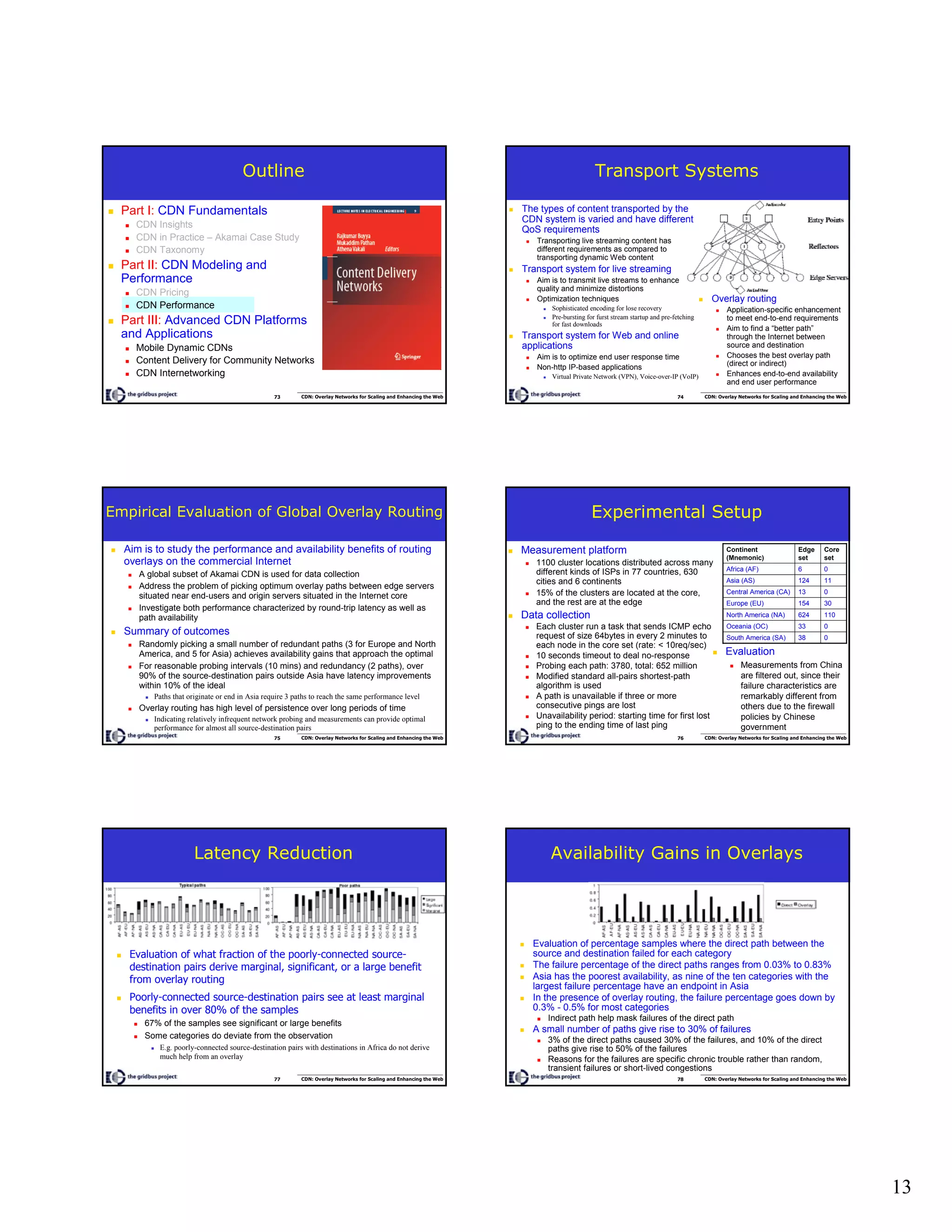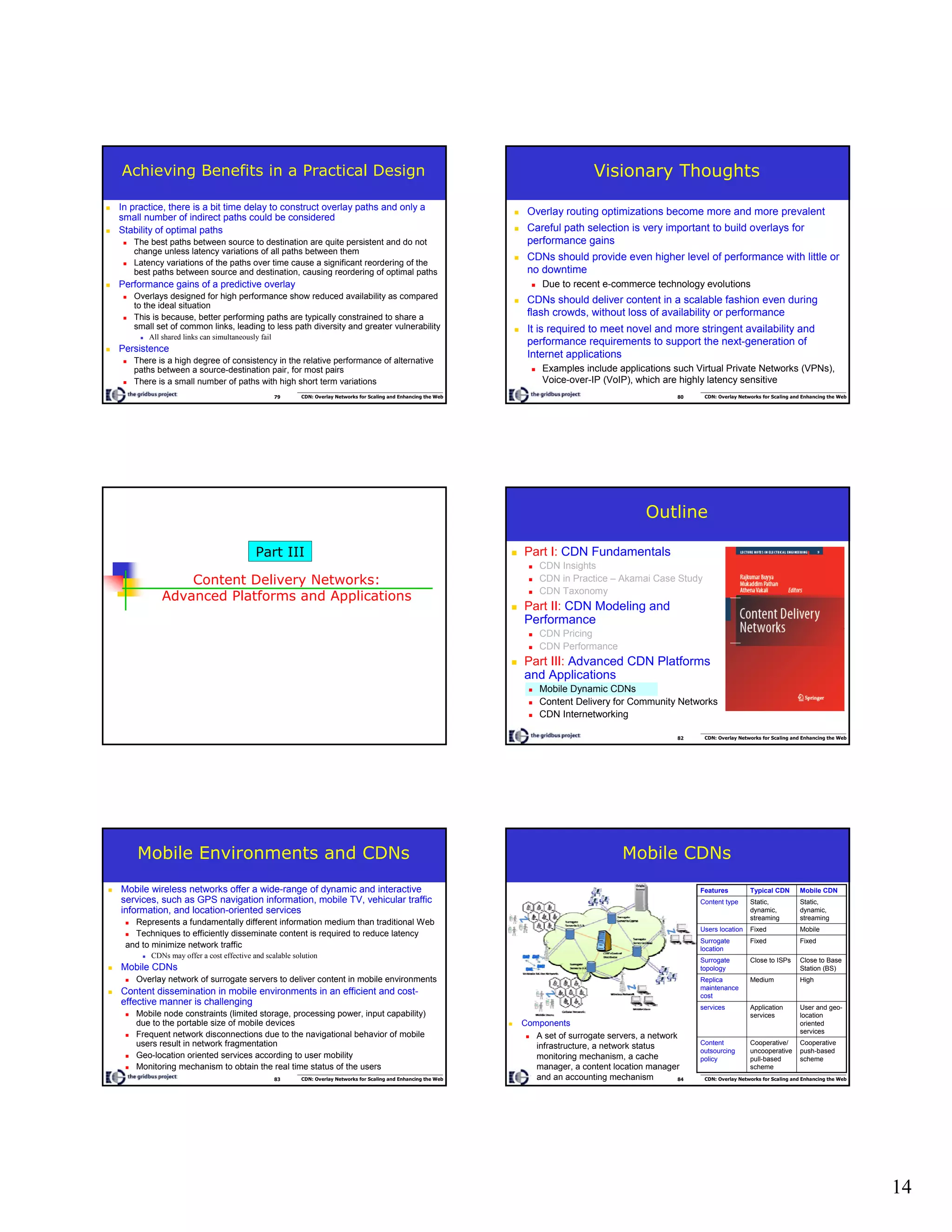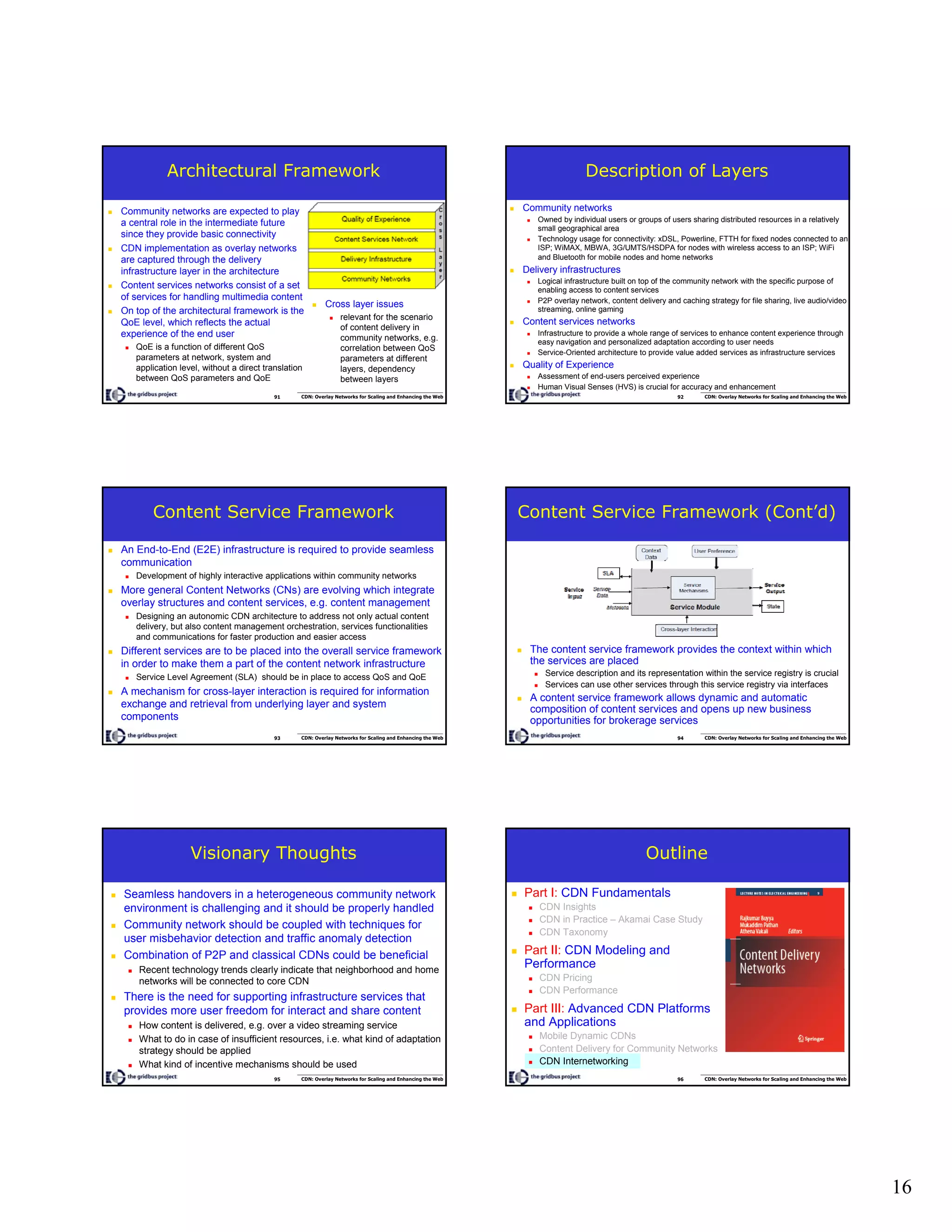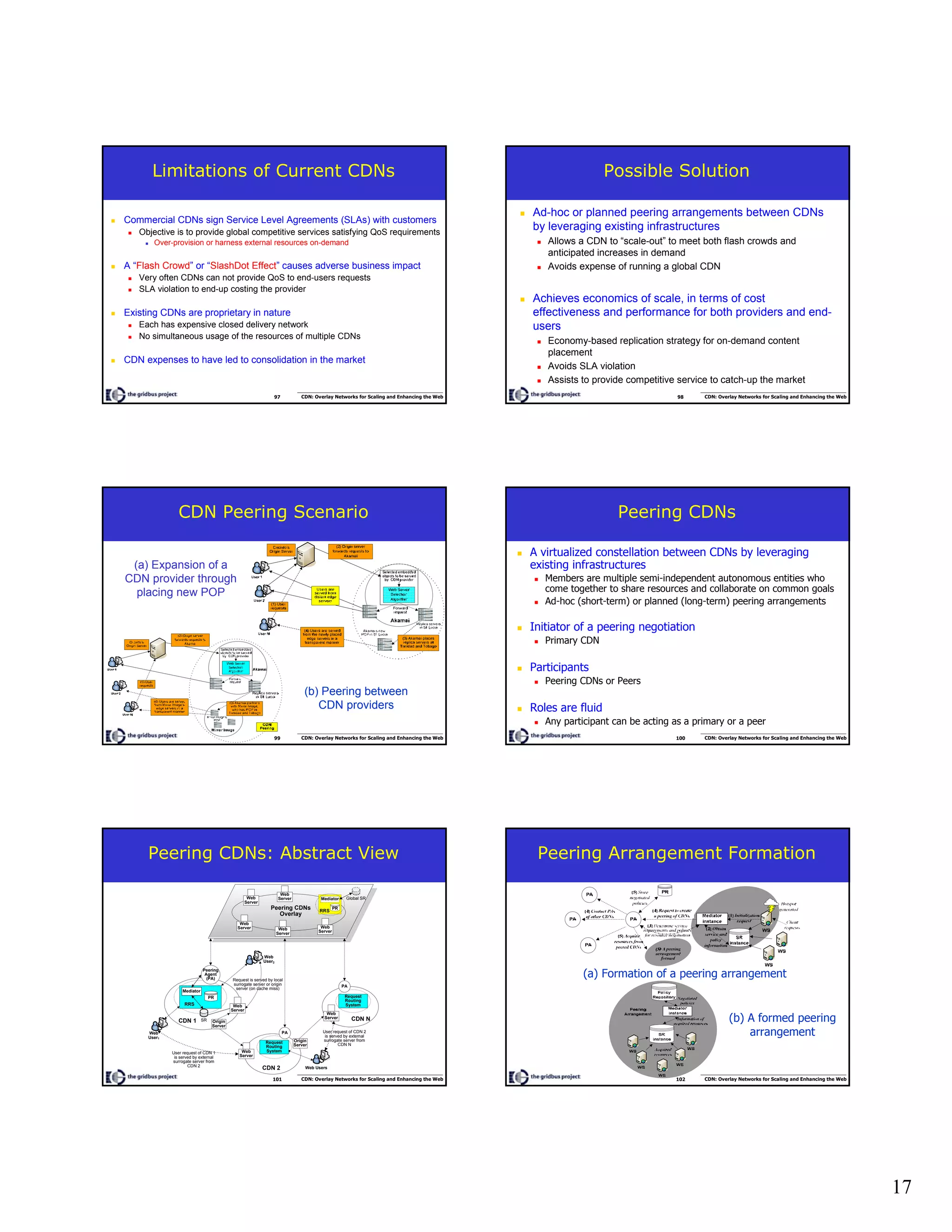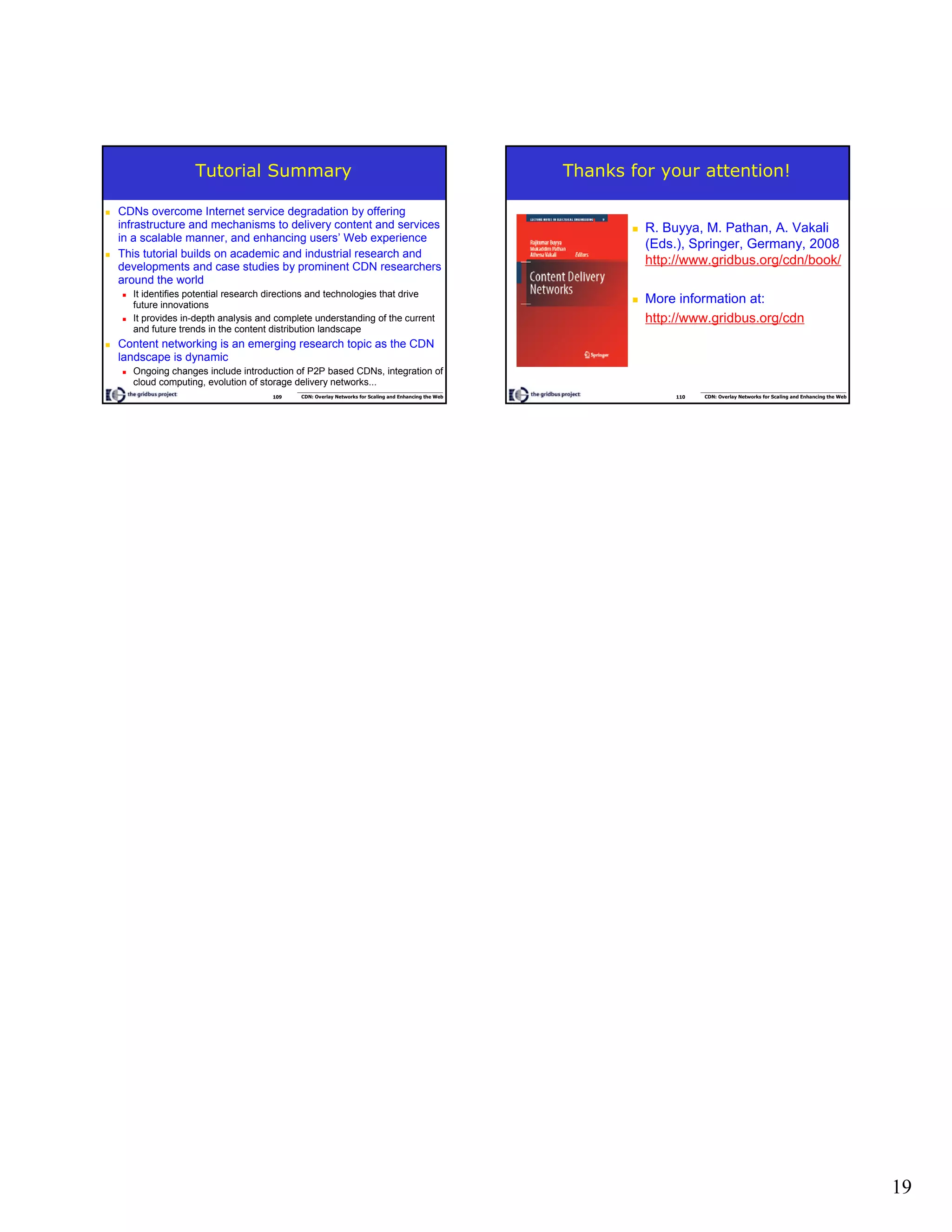This document provides an overview of content delivery networks (CDNs) and Akamai, the largest CDN provider. It discusses how CDNs work to distribute content across multiple servers located closer to end users to improve performance. It then describes Akamai's technology in more detail, including how it handles DNS resolution and redirects user requests to optimal servers to deliver content more efficiently than having all requests go to a single origin server.
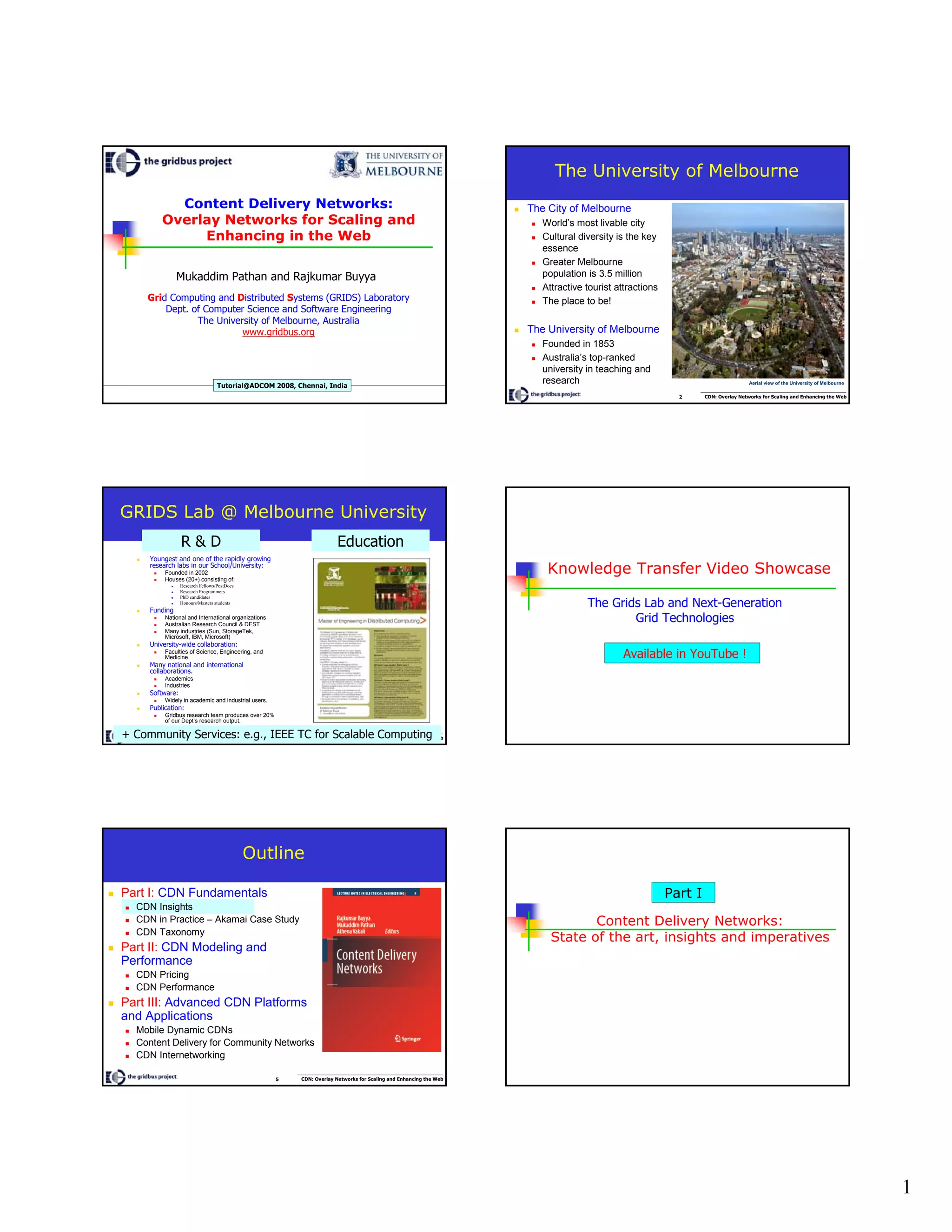
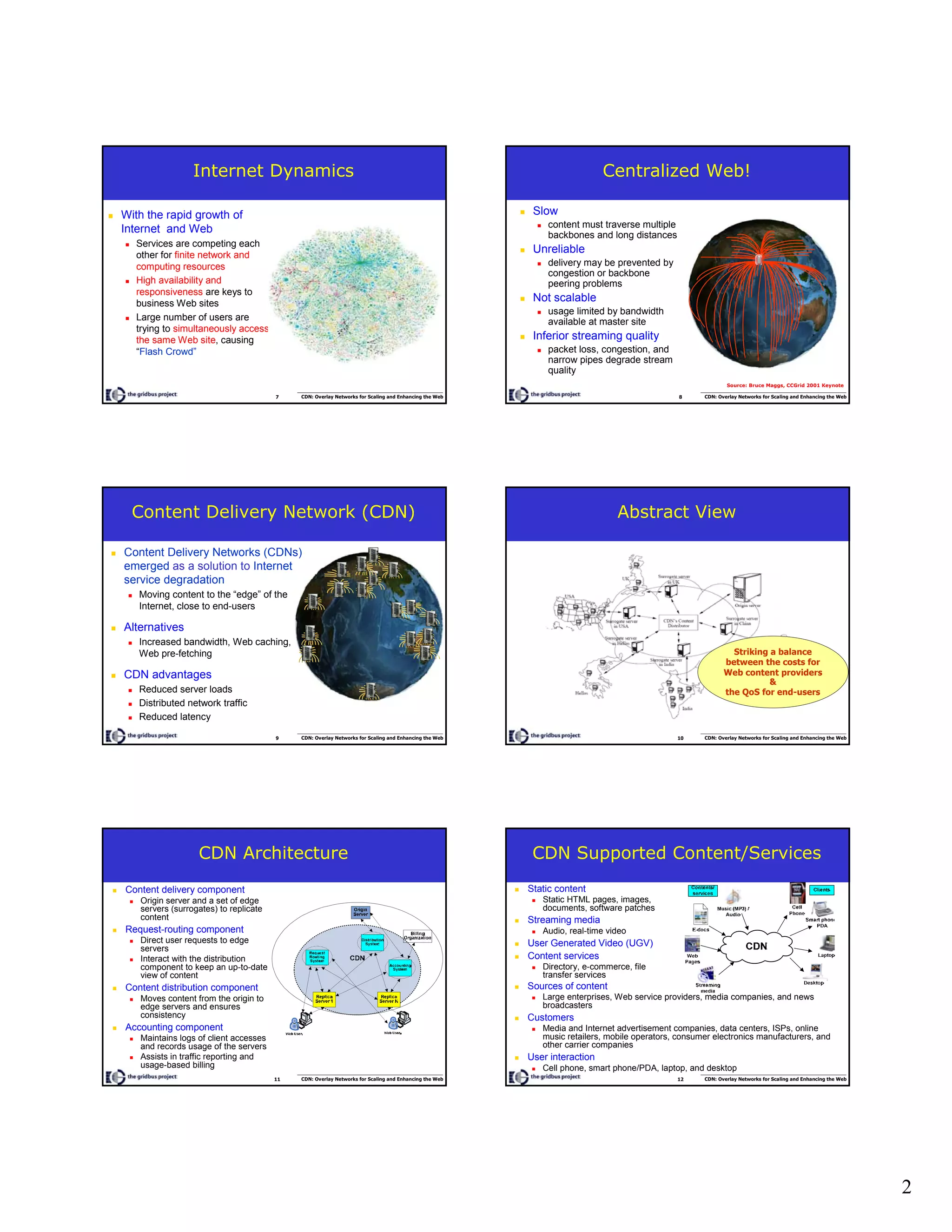
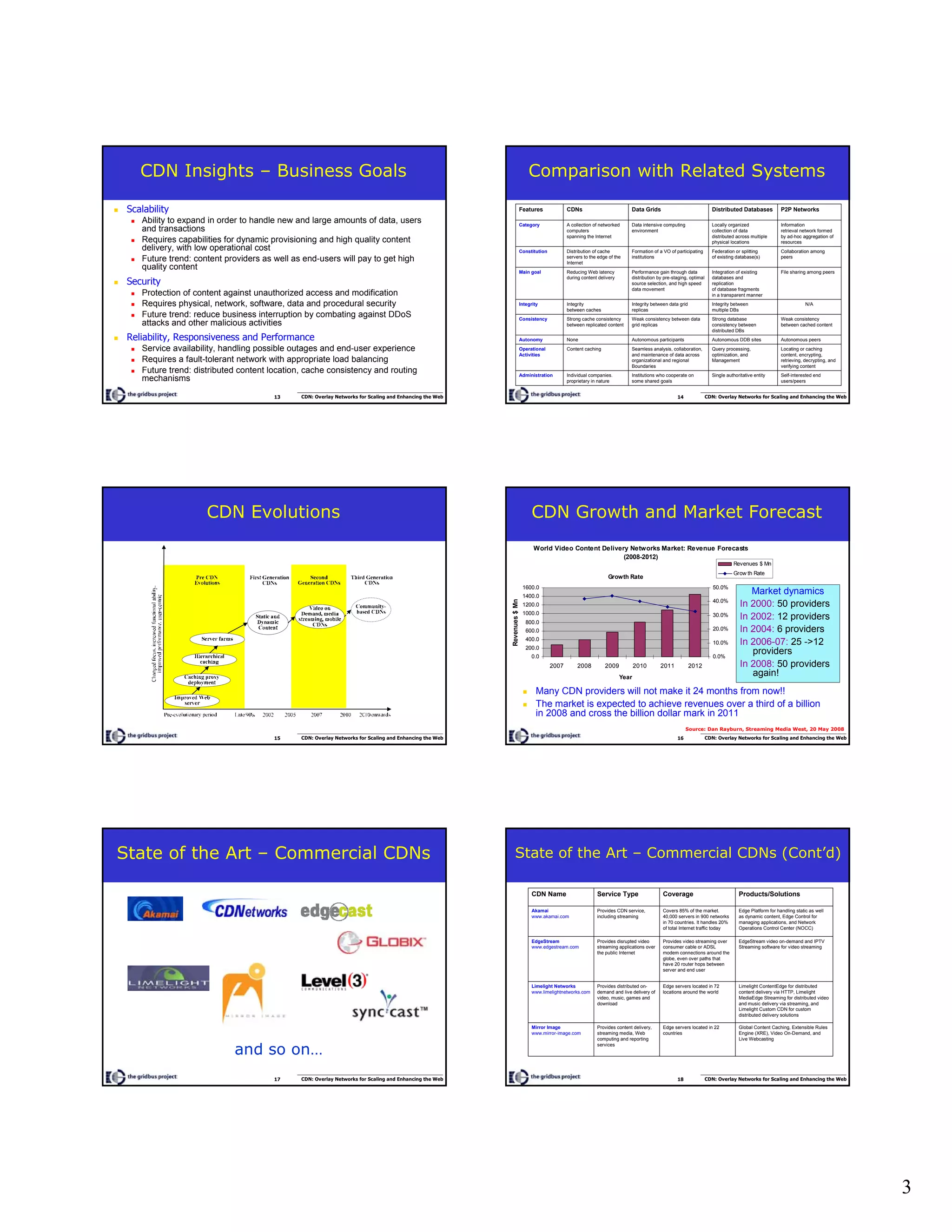
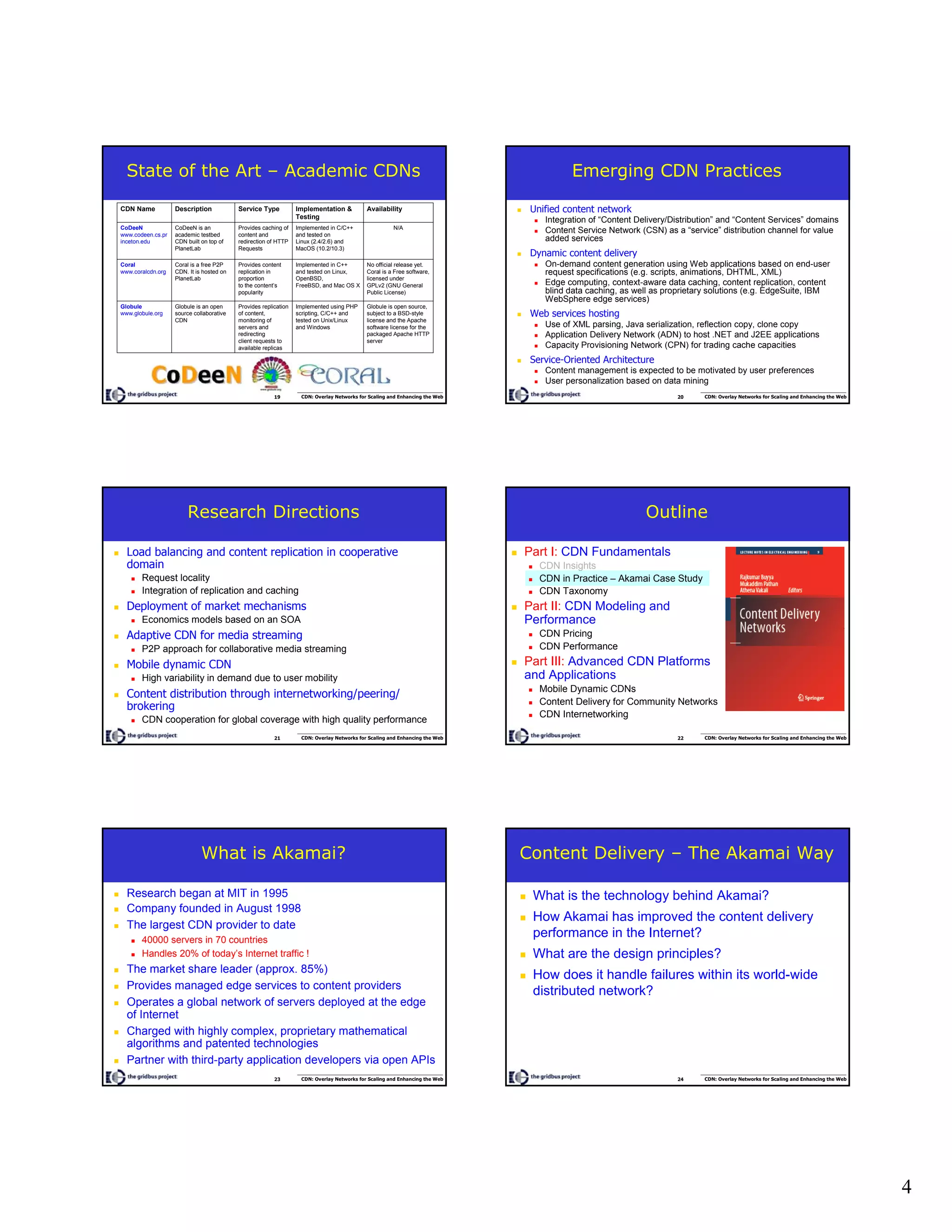
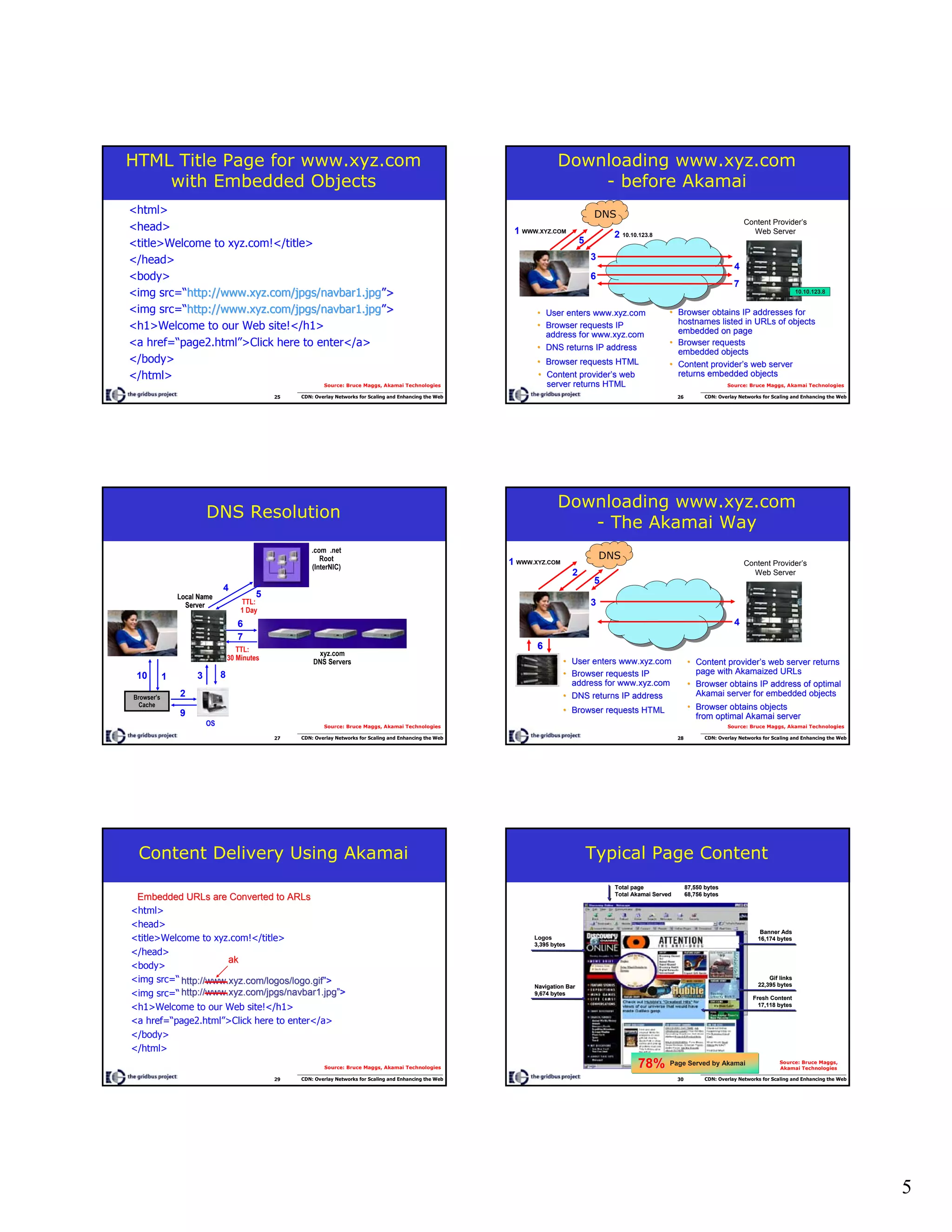
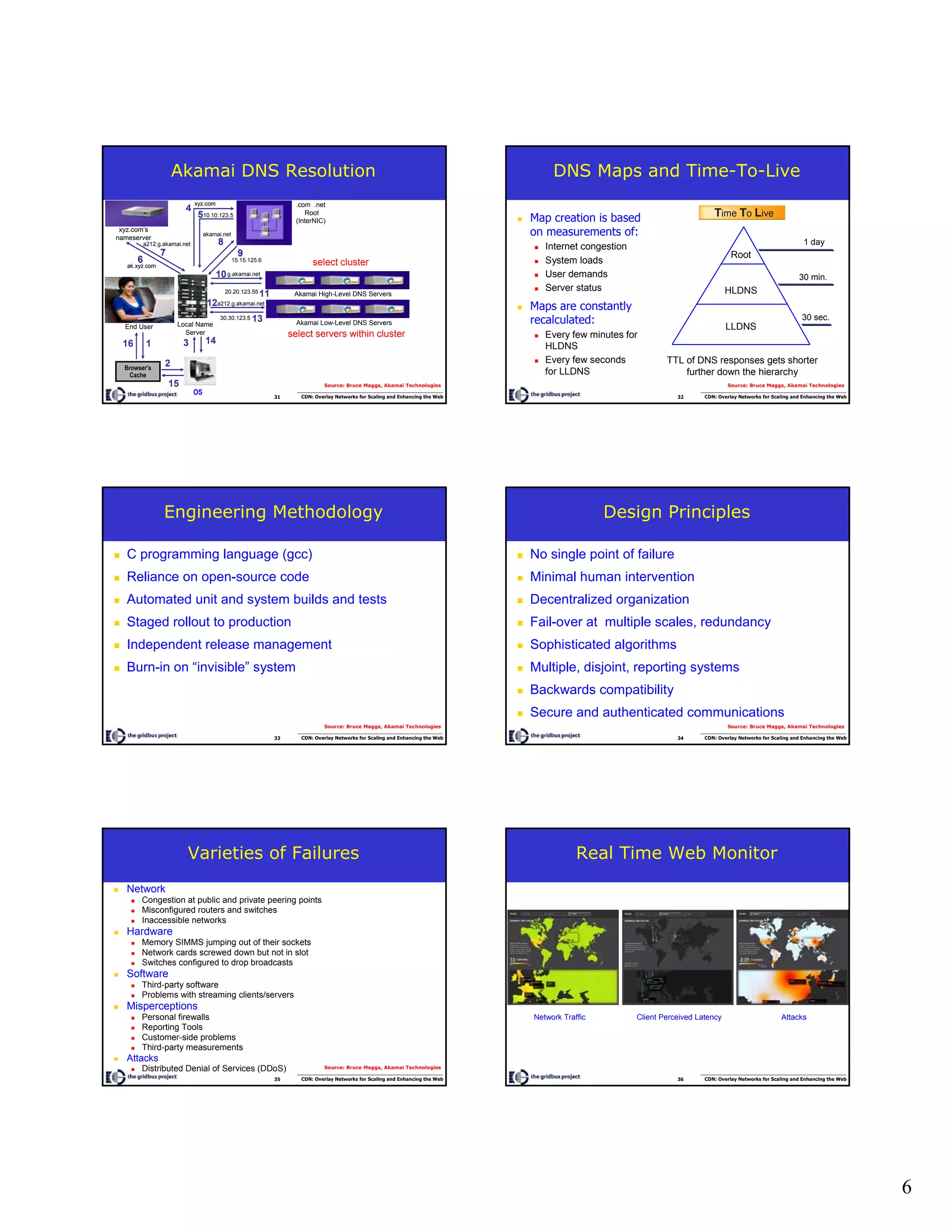
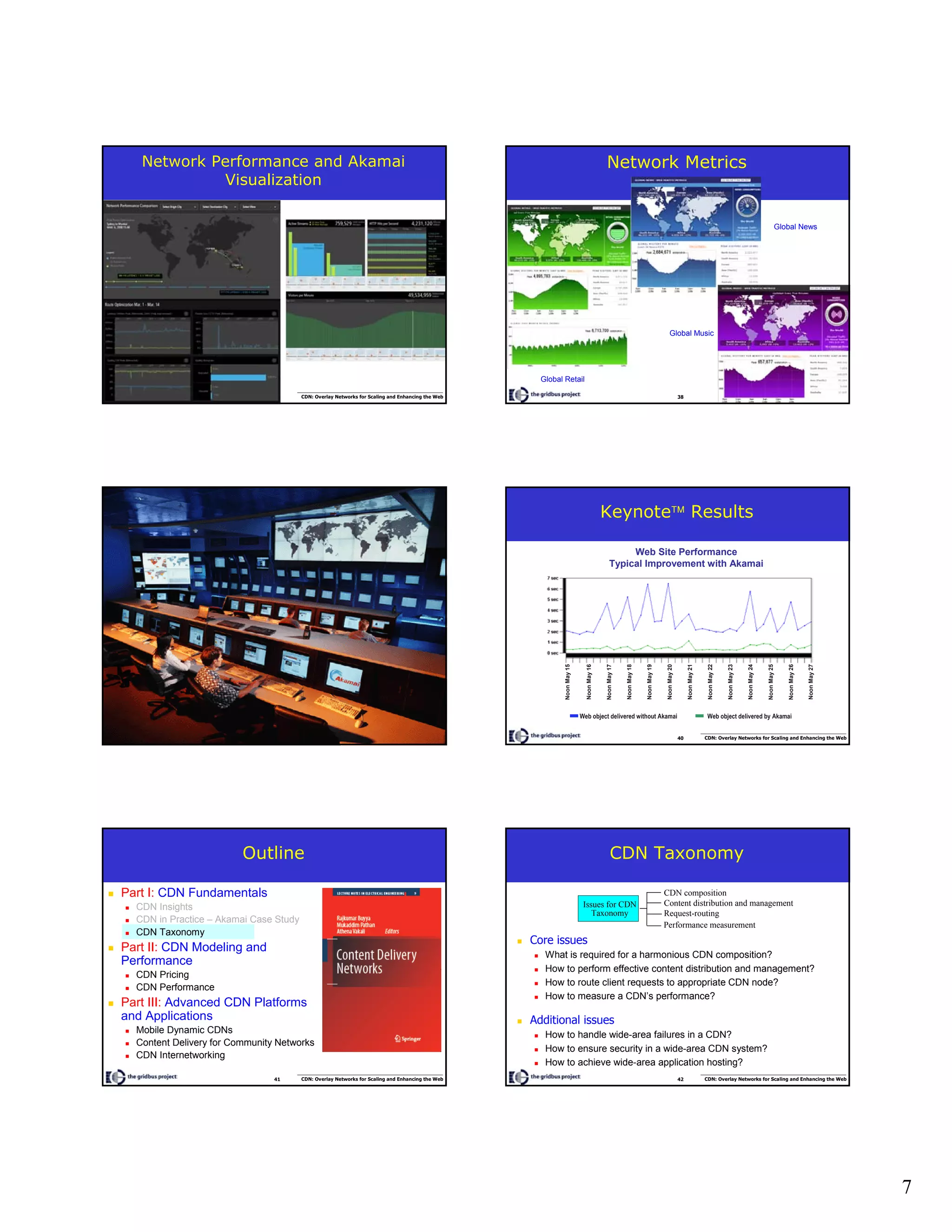
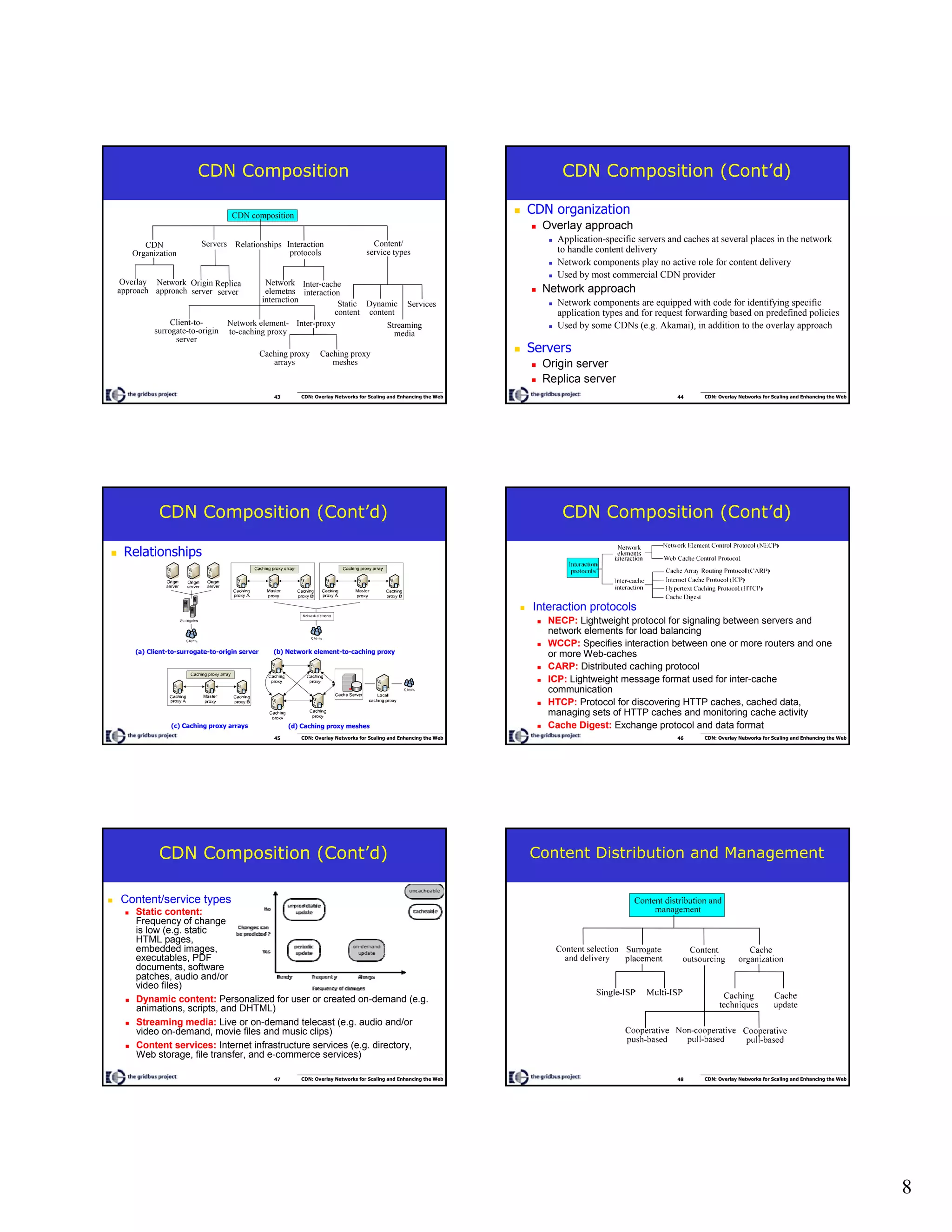
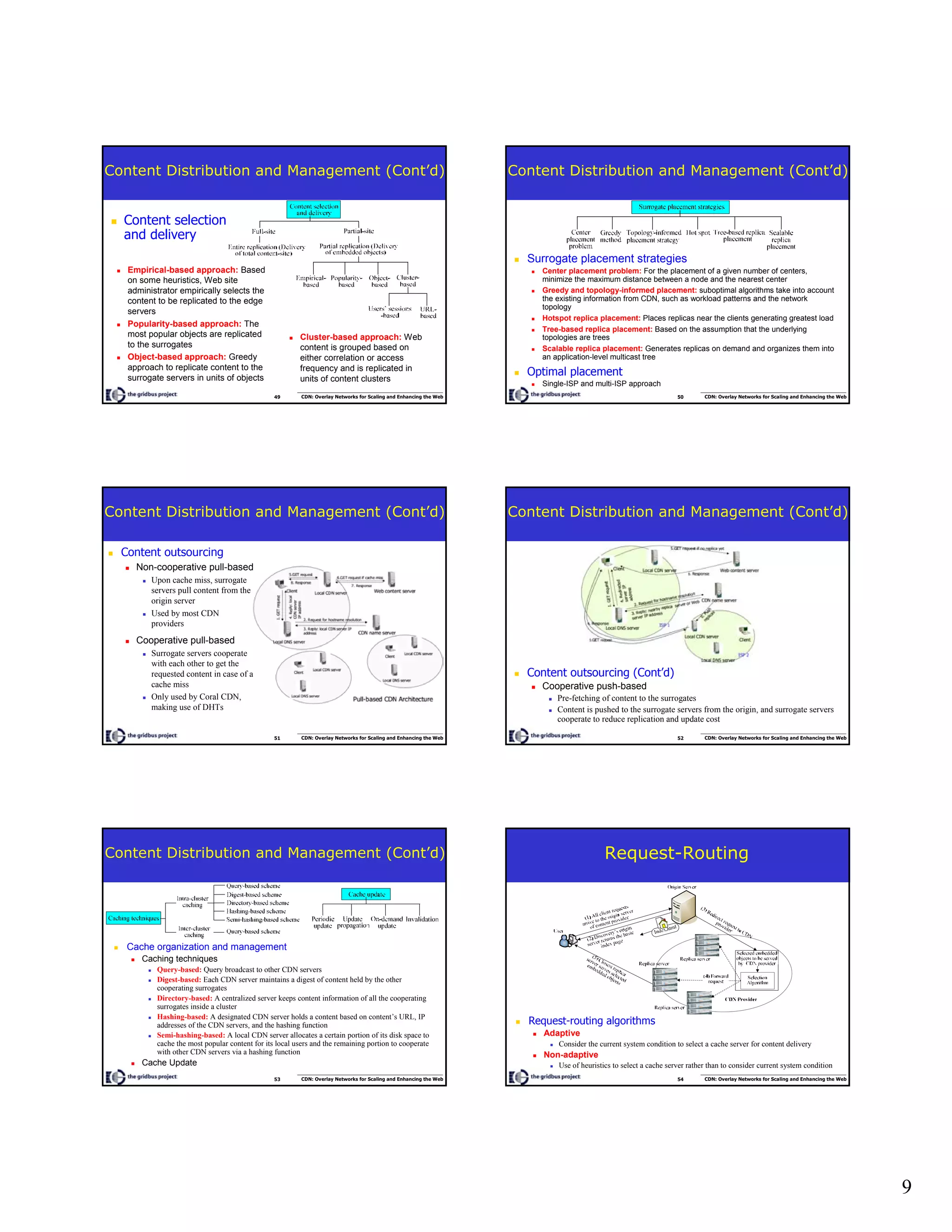
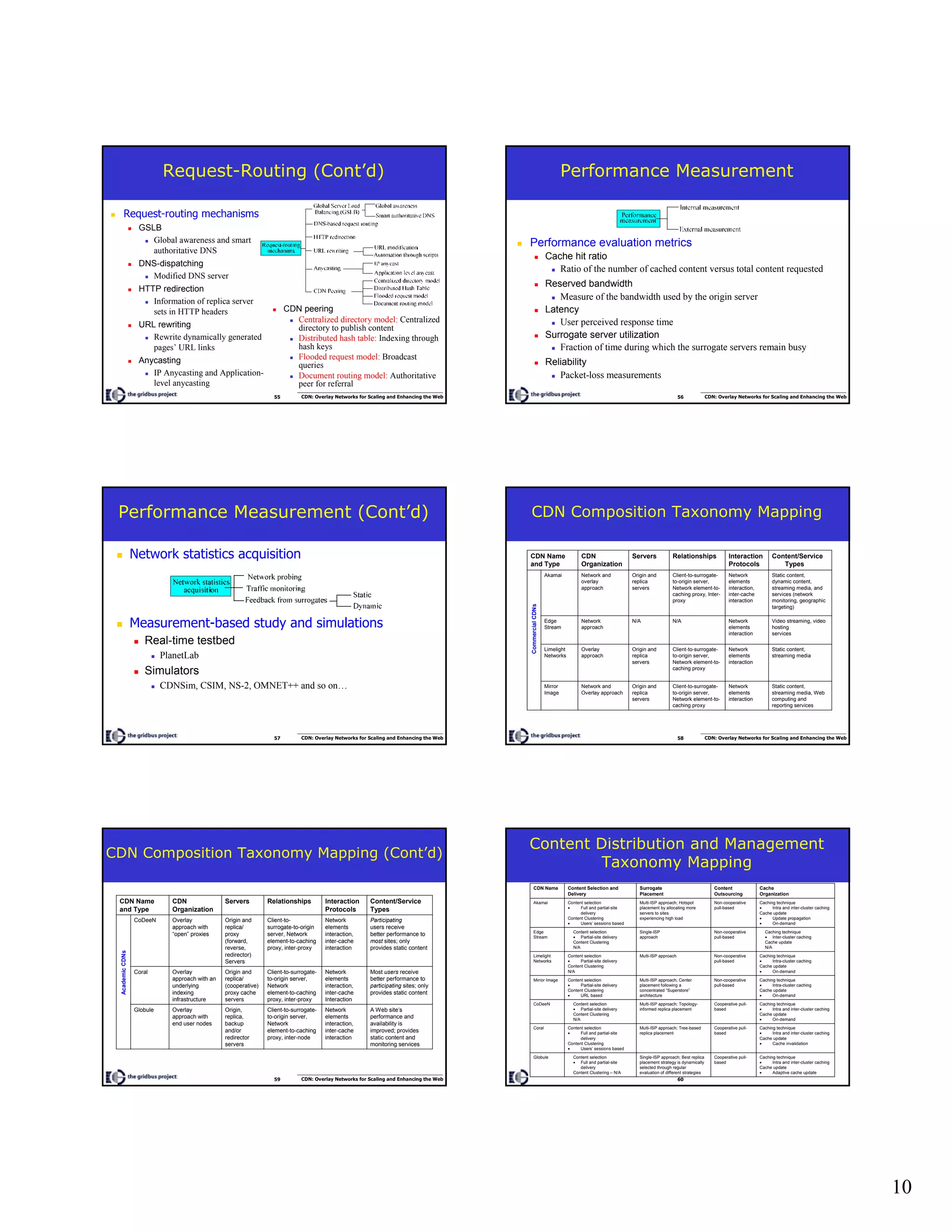
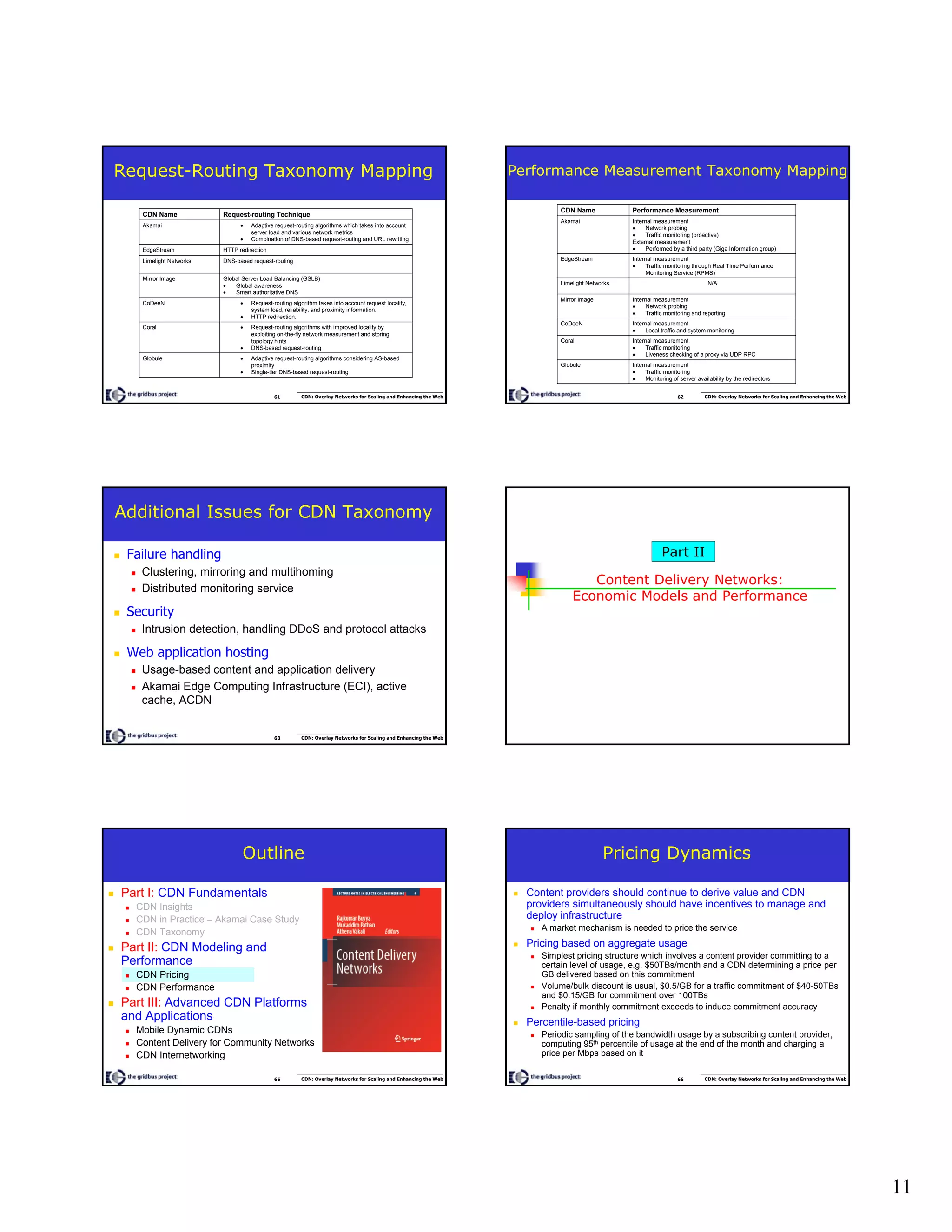
![12
67 CDN: Overlay Networks for Scaling and Enhancing the Web
Pricing Dynamics (Cont’d)
Congestion pricing in networks
Focus is on the interaction between pricing and QoS by studying the trade-off
between congestion cost and capacity cost
Pricing plays a key role to achieve desired QoS, when capacity can not be
easily increased
Increase in pricing encourages users to shape their traffic and control the demand for network
services, which in turn reduce network congestions
Congestion reduction is not a CDN’s goal
Congestion pricing research do not readily transfer to CDN domain
Economics of content delivery
Usage based pricing should entail volume discounts when subscribing content
providers have similar traffic burstiness level
Volume discount can be sub-optimal for highly heterogeneous Bursty traffic
Profitability from a percentile-based pricing is substantially higher than usage-
based billing
68 CDN: Overlay Networks for Scaling and Enhancing the Web
CDN Pricing Models
Determining a CDN’s optimal pricing policy
Determine a content provider’s expected surplus from self-provisioning and that
from delivering content through a CDN
Content provider chooses the option with higher expected surplus
Based on the content provider’s subscription decision, determine the CDN’s
optimal pricing policy, which maximizes expected profit
Self provisioning by content provider
Expected surplus, Uself = V - C(I) - c*L(I)
V is the benefit from responding to I requests/unit time
C(I) is the cost for maintaining infrastructure, which is concave in I because of economies of
scale
c is the cost of each lost request and L(I) is the number of lost requests
Provisioning through a CDN
Expected surplus, UCDN = V + b(I)*λ- C0 – P(X)
b(N) is the benefit per request from faster delivery through a set of N CDN servers
C0 is the cost of outsourcing content delivery
P(X) is the usage-based price the CDN changes the content provider
69 CDN: Overlay Networks for Scaling and Enhancing the Web
CDN Pricing Models (Cont’d)
CDN’s profit function, Π = CDN’s expected revenue – CDN’s cost
First term is the sum of revenues from all content providers and the second
term is modeled to be quadratic over the man volume of traffic handled by CDN
A CDN does not know the outsourcing cost of individual content provider, but
knows the cost distribution across content providers
Simulation is used to compute optimal infrastructure, associated expected
surplus under self-provisioning and CDN provisioning for a given CDN
price function
Optimal pricing for Poisson and Bursty traffic
1000 content providers with arrival rate from a Pareto distribution [1000, 8000]
Poisson traffic: all content providers have Poisson traffic
Bursty traffic: all content providers have Bursty traffic
Modeled as a Markov Modulated Poisson Process (MMPP)
Mixed traffic: 500 CPs have Poisson and 500 CPs have MMPP traffic
Cost of serving 233 requests/min is $804 per month
Content provider’s outsourcing cost is drawn from a Uniform [0, 30000]
70 CDN: Overlay Networks for Scaling and Enhancing the Web
Experimental Results
Optimal prices are higher under
Bursty traffic
Price (MMPP) > Price (Mixed) > Price
(Poisson)
CDN’s value proposition to content
providers in terms of avoiding lost
requests is enhanced in the presence of
Bursty traffic
It leads to a price increase by a CDN
Optimal price under mixed traffic is convex
and involves a volume tax rather than a
volume discount
Traditional usage-based pricing is
inefficient under Bursty traffic
Penalize content providers with low
burstiness or content providers with high
volume
71 CDN: Overlay Networks for Scaling and Enhancing the Web
Experimental Results (Cont’d)
Percentile-based pricing is more
profitable for a CDN
Focus is on quadratic price function with
simplify numerical computation
CDN profit is higher for mixed traffic
CDN profit is almost same for Poisson
and MMPP traffic
Mean request rate is fixed
Mean-based pricing can be converted to a
percentile-based pricing policy
With mixed traffic, a CDN is permitted to
provide volume discounts and at the same
time, charge a higher price with greater
traffic burstiness
Drawbacks
Complicated billing and lack of standardization
Heterogeneous burstiness
across content providers
Percentile-based pricing is
preferable
Usage-based pricing is
usable for similar burstiness
72 CDN: Overlay Networks for Scaling and Enhancing the Web
Visionary Thoughts
CDNs face a non-trivial pricing problem
Percentile-based pricing is more profitable, but usage-based pricing is
preferential as the first is perceived as form of peak pricing
It is expected that a transparent pricing plan coupled with
competitive pressure will ultimately decrease the usage of
percentile-based pricing in the next few years
CDN pricing research has focused a monopolized market
Impact of competition on the pricing policies chosen by the CDNs could be
investigated
Impact of P2P and hybrid CDNs on pricing are yet to be understood
Another possibility is to provide content providers options to
choose from usage-based or percentile-based pricing policies
It is not clear whether it is desirable
CDNs require to devise a longer term solution
“Pay-as-you-go” as used in Cloud and utility computing, Storage Delivery
Networks, e.g. Amazon S3 and EC2, could emerge in CDN domain](https://image.slidesharecdn.com/cdntutorialadcom-101201061936-phpapp01/75/ZT-CDN_tutorial_adcom-12-2048.jpg)
